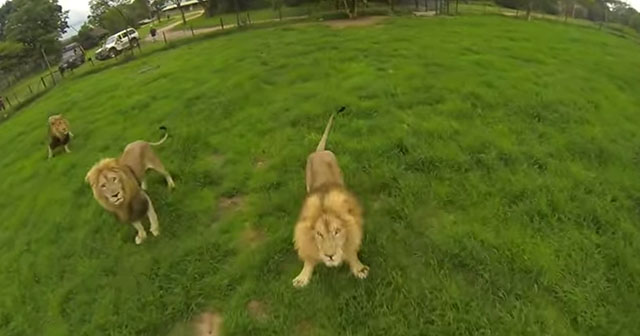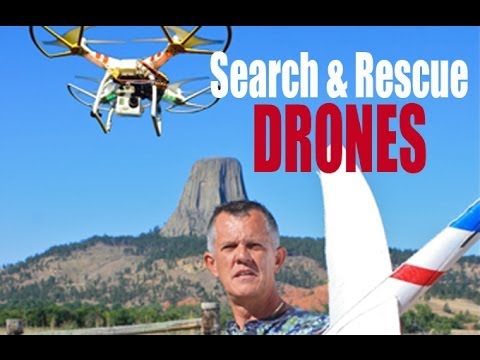https://ift.tt/1IwfwN3
With the FAA still figuring out how to speed-up the process of incorporating commercial drones safely into U.S airspace, European authorities have realized the potential and possibilities for growth in both the economic and technology sectors.
It might also be an exciting time for those business owners who have already tried using drones towards fresh and innovative marketing ideas, or even a boost in productivity, only to be kept back by current restrictions.
With Google already working on ways to track UAV’s safely beyond the FAA’s ‘line of sight’ rule, it’s obviously just a matter of time as unmanned aerial systems for commercial use have created a slight buzz over the last few years, but it will prove to be much more than that …
10. Farming.
Even Old McDonald knows that optimization is the key to running a successful farm, as an ever growing world population will require future agriculture to maximize gain from a minimum amount of input. “High-throughput plant phenotyping” (HTPP) revolves around a combination of technologies where scientists use aerial data to determine the health and identify problem spots within a crop field.
Previously, helicopter and fixed-wing aircraft could be used to spot differences in the colour of crops and diseased areas not always seen from ground level, but at great cost. The combination of software and infrared capability, standard on almost all high-end commercial drones nowadays, will allow any farmer to utilize these crucial scientific methods on a regular, cost effective basis and implement the necessary procedures before crop diseases has time to spread.
Farmers will be able to manage resources and expenses like pesticides more accurately, eliminating overuse and keeping their negative environmental effects to a minimum.
9. Real Estate Marketing.
Some real estate agents have already started using drone photography and video footage, but removed it due to uncertainty and possible legal issues. Marketing homes and properties in ways that has not yet been seen created a slight enthusiasm across the country with real estate marketers.
Houses located closer together might be an issue, like in Washington or in forested areas for instance, but those will not be a real estate agent’s only clients. With the FAA easing up on regulations for the use of commercial drones in the next few years, realtors will welcome a change that will most likely lead to agents’ using drone footage more often, maybe even permanently.
The real estate marketing business is booming. Client demands, pressure from competitors, or just being able to show-off scenic views around a clients home in a creative way, is guaranteed to cause major changes in the industry.
8. Motion Pictures.
The action packed motorcycle chase over rooftops in the Bond film “Skyfall” was shot in Istanbul with a UAS. Of course their function in the U.S. motion picture industry could become invaluable, after FAA regulators gives the final word.
As Hollywood has also been battling for years to use drones, its no real surprise that the first legal use for a UAV has only been recently, marking an era where filmmakers could be allowed more chances for experimenting with clever camera angles and shots that were previously not possible with a helicopter.
Drones suddenly open up all kinds of opportunities for smaller film companies to acquire aerial footage more easily and filming of various other cinematography productions in the U.S., creating economic growth and more jobs. It is all-good and simply means that once drone-use is permanently established in the industry, filmmakers will be wondering: why has it taken so long?
7. Photography.
With wedding photographers across the country describing it as an “arms race,” almost half of their potential clients now inquire about capturing aerial drone footage during ceremonies, sometimes inside the church.
Other wedding photographers risk serious penalties trying to sneak their way around FAA-regulations, but it all just points towards how big the drone wedding industry could possible become, once more permissive structures are put into place.
Nature photographers have taken spectacular aerial shots of meandering rivers and glowing green forests from a fix-wing or rotor aircraft before, so it’s nothing new, but the profound effect that some nature photographers have experienced while using drones can only be described as revolutionary.
From the usual 1,000 feet with a helicopter and telephoto lens to 100 feet with super wide-angle lens, the sudden change in perspective and elevation from a drone, now creates more intimacy and allows for views never seen before.
6. Humanitarian Logistics.
Recent disasters like Hurricane Sandy have compelled the American Red Cross and other major logistical companies to study, evaluate and predict performance of unmanned aerial systems during times of crises.
Research and input from various other organisations also show the substantial benefit that drones could provide, especially to first responders and those emergency services operating in difficult terrain, after a disaster has occurred.
The ability to deliver small packages of lifesaving antibiotics, or vital surgical components to remote areas without risking further loss of life, makes it hard for aviation authorities around the world to ignore. Once certain bans and restrictions are lifted, the advancement of commercial drone technology will most likely spill over into these areas, making it an obvious future tool for humanitarian aid
5. Construction.
With some of the biggest projects in Europe already using them for aerial surveying, drones are starting to form a vital component in the way construction companies plan, build and improve on major projects.
The future of construction will mainly focus on energy resourcing, conservation and efficiency as images and aerial data obtained from scanning sites is then relayed to teams during the building process. Together with software, the data provides thermal images and offers builders with different ways to improving and optimizing areas towards maximum energy efficiency.
The use of drones during massive construction projects is offering an increased level of accuracy that is sure to be implemented on a permanent basis once local construction companies make aviation regulators in the U.S. aware of this.
4. Anti-Poaching.
The war between poaching syndicates and wildlife conservationists are very real, with the price of rhino horn now standing at US$60,000 per-kilogram, bloody battles are fought on a daily basis.
Rhinos have been around for 50 million years. Unfortunately the current rate of decline due to continued ignorance, this magnificent animal will be no more in less than 20 years.
Since 2013, drones have been used to catch poachers, but considering some parks in Africa are the size of New Jersey, the role and value of UAV’s towards the future of conservation becomes apparent. Recent upgrades to drone software, algorithms and technology, combined with analytics and data, forms a type of system that tries to predict, thru patterns, where poachers might attempt to strike next.
Conservationists have in fact been using drones to outsmart poachers and achieve a measure of success, due to constant maneuvering and correct placement of anti-poaching patrols. The understanding, advancement and full support from local government institutions toward the use of drones will be critical in curbing the rampant slaughter of all endangered species.
3. Deliveries.
A restaurant chain in Singapore has already started experimenting with drone waiters, leaving staff free to improve customer service in general. After testing and approval of cheap transmitters in the next few years, drones will be able to operate beyond the aviation authorities’ “line of sight” rule, making the future for deliveries by a unmanned aerial system limitless.
Research and development by Amazon focuses on perfecting the algorithms and software that will keep a drone flying in the event of signal loss and also deals with avoiding birds, trees, buildings, thrown rocks, kites, bullets, other drones, profanity and anything else the human race will be hurling at it coming D-day.
With Amazon intent on using a section of airspace between 200 and 500 feet, it seems logical that other companies would also be focusing on the same corridor, while maintaining a maximum standard of safety, especially over populated areas. Taking delivery vehicles off the road would also do well towards easing congestion, pollution from vehicle emissions and people in general wanting to beat each other up due to road rage.
2. Storm Chasing.
Predicting extreme weather conditions like tornadoes, hurricanes and tropical storms have always been a major challenge for scientists. The best they are able to manage is 20 minutes, which leaves almost no chance of safely evacuating a relatively populated area or town.
Some scientists believe that UAS and drones could access certain areas in the lower atmosphere that was previously inaccessible, leading to an increase in warning-times from threats like tornadoes and hurricanes by 40 minutes.
Thru the years, universities and researchers have looked at the idea of using drones for gathering storm data, but serious commitment only happened in 2010, when NASA flew its Global Hawk drone over a tropical storm for the first time.
Tornadoes have claimed the lives of many researchers thru the years. Future advancements in commercial drone design and power will enable storm-chasing scientists to gather crucial data from a much safer distance.
1. Search-and-Rescue.
People with Alzheimer’s and autism have been known to walk away from their homes, only to be found hours later and a few miles away. Organisations like Project Lifesaver also aid families by tracking registered persons with a cognitive condition, but these searches could sometimes take up an enormous amount of time, cost and resources from local authorities and emergency services.
Drone design in the coming few years will make them more compact and versatile, able to be deployed by first responders, or by the family member of someone with a cognitive condition, once more permissive laws are in place.
With UAV’s already saving countless lives around the world in search-and-rescue efforts, even regular drone-hobbyists are now establishing the value of the technology after assisting authorities in numerous cases of missing persons. By incorporating UAS with helicopters during routine exercises, search-and-rescue teams have also found cost effective ways of extending their search areas by well over 5 miles, making the future-use of more than one drone for search-and-rescue purposes, obviously.
TECH
TRENDS,AMAZING
via Toptenz.net http://www.toptenz.net
May 13, 2018 at 07:34PM
.png)











No comments:
Post a Comment